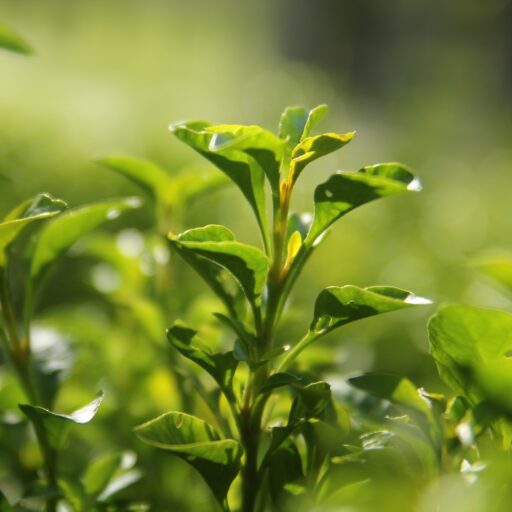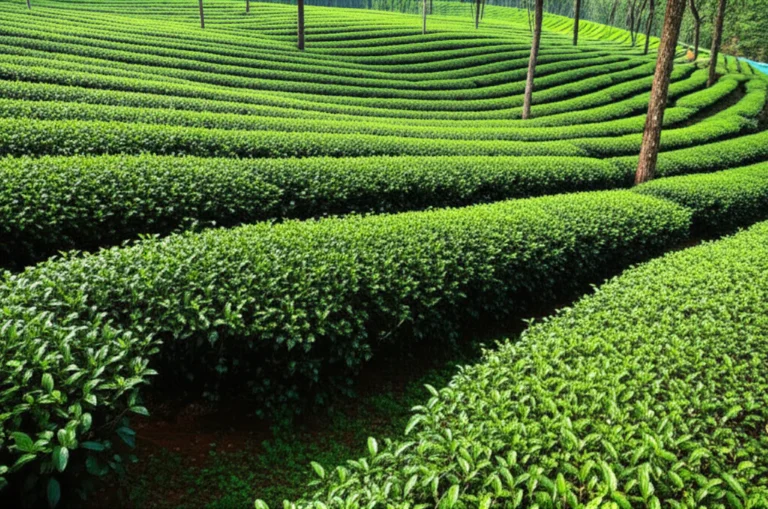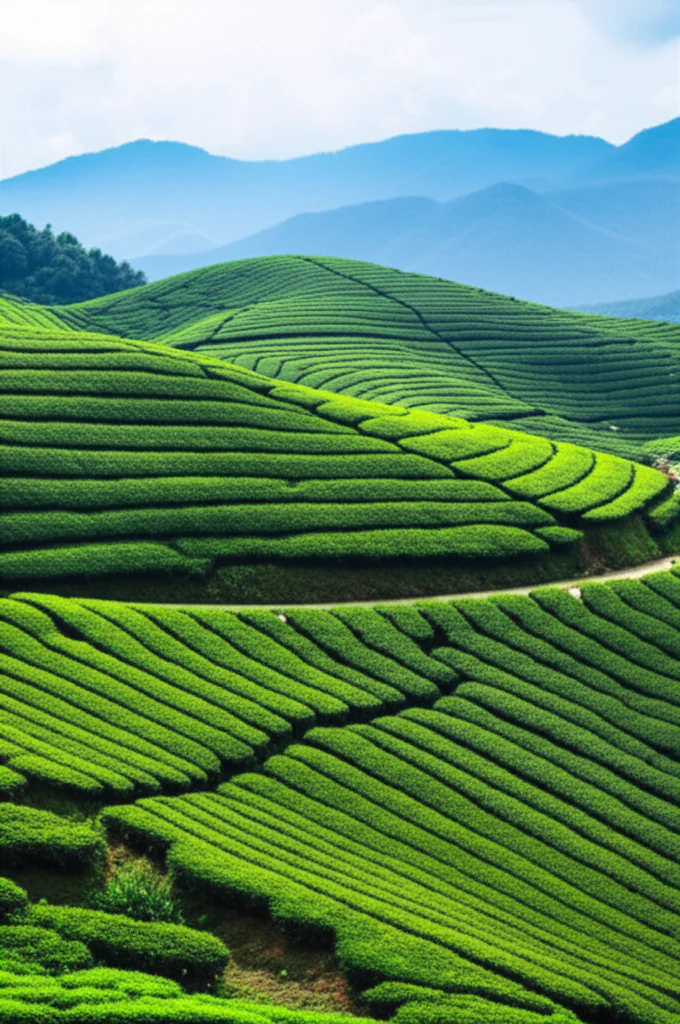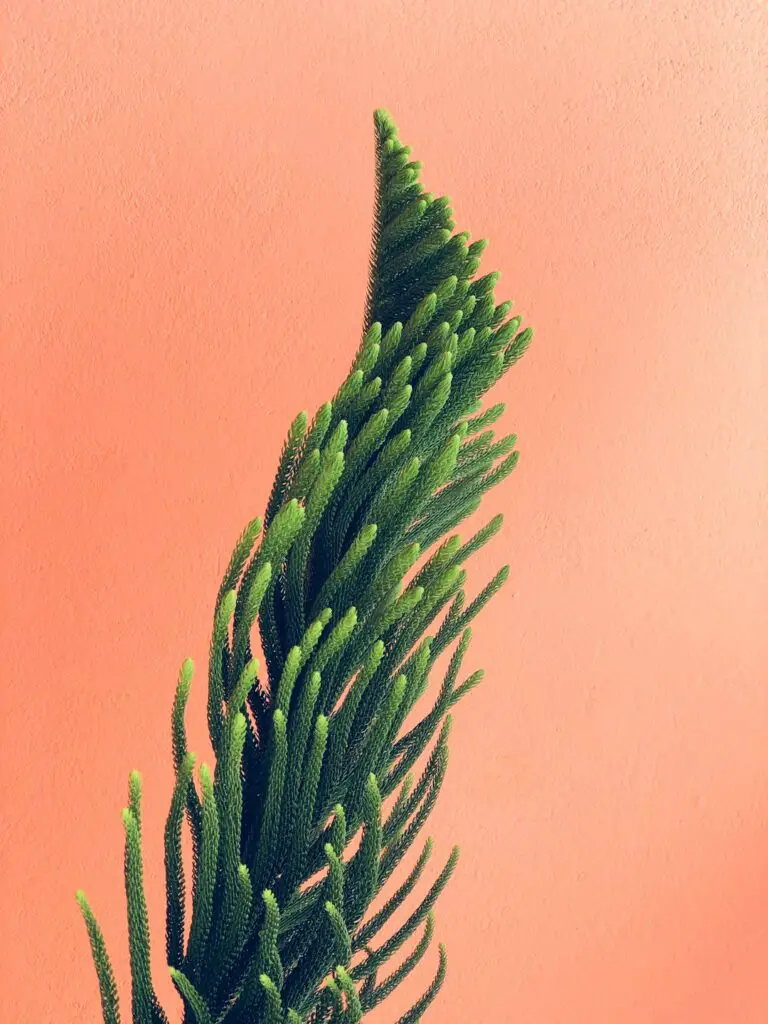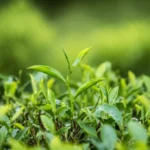Support our educational content for free when you purchase through links on our site. Learn more
How Often Should I Water My Tea Plants? 🌿 The Ultimate Guide (2025)
If you’ve ever found yourself staring at your tea plants wondering, “Am I watering too much? Or not enough?”—you’re not alone. Watering Camellia sinensis is a delicate balancing act that can make or break your tea-growing success. Too little water and your leaves wilt and dry out; too much and you risk root rot and a sad, soggy plant. But here’s the kicker: there’s no one-size-fits-all answer. Your tea plant’s watering needs depend on everything from soil type and climate to plant age and even the time of year.
In this comprehensive guide, we’ll walk you through 7 essential factors that influence how often you should water your tea plants, reveal the foolproof “finger test” method to know exactly when your plants are thirsty, and share insider tips on sustainable watering practices that save water and boost plant health. Plus, we’ll uncover how proper watering directly impacts the flavor and quality of your homegrown tea leaves—because at Growing Teas™, we believe great tea starts with great care.
Ready to become a watering wizard and brew the perfect cup? Let’s dive in!
Key Takeaways
- Watering frequency varies based on soil, climate, plant age, and season—there’s no universal schedule.
- Use the finger test: water when the top 1-2 inches of soil feel dry.
- Deep, infrequent watering encourages strong roots and healthier plants.
- Avoid overwatering to prevent root rot—signs include yellowing leaves and soggy soil.
- Rainwater and acidic soil are ideal for tea plants’ hydration and nutrient uptake.
- Sustainable practices like mulching and rainwater harvesting conserve water and promote plant health.
- Proper watering influences the flavor and antioxidant content of your tea leaves, elevating your brew.
Curious about the exact watering schedule for each season or how to troubleshoot common watering mistakes? Keep reading—we’ve got you covered!
Table of Contents
- ⚡️ Quick Tips and Facts on Watering Tea Plants
- 🌱 Understanding Tea Plant Hydration: The Science Behind Watering
- 🌿 7 Essential Factors That Influence How Often You Should Water Your Tea Plants
- 💧 How to Properly Water Your Tea Plants: Techniques and Best Practices
- 🌦️ Signs Your Tea Plant Is Thirsty or Overwatered: What to Watch For
- 🛠️ Troubleshooting Common Watering Mistakes and How to Fix Them
- 🌿 Companion Plants and Their Water Needs: Aligning Your Garden’s Hydration
- 📅 Seasonal Watering Schedule for Tea Plants: A Month-by-Month Guide
- 🌍 Sustainable Watering Practices for Eco-Friendly Tea Growing
- 🧪 How Water Quality Affects Tea Plant Health and Growth
- 🍵 From Leaf to Cup: How Proper Watering Impacts Tea Flavor and Quality
- 🌿 More Info on Tea Plant Growth and Care: Beyond Watering
- 🔍 Quickly Identify Tea Plant Water Stress: Visual and Tactile Clues
- 📚 Recommended Links for Tea Plant Watering and Care
- ❓ FAQs About Watering Tea Plants
- 📖 Reference Links and Further Reading
- 🎯 Conclusion: Mastering the Art of Watering Your Tea Plants
Alright, let’s spill the tea on watering your precious Camellia sinensis! Here at Growing Teas™, we’ve seen it all—from parched, pathetic plants to ones literally swimming for their lives. The secret to a perfect cuppa starts long before the kettle whistles; it begins with how you handle the watering can. So, grab a mug of your favorite brew, and let’s dive into the nitty-gritty of tea plant hydration.
⚡️ Quick Tips and Facts on Watering Tea Plants
In a hurry? We get it. Here’s the lowdown on watering your tea plants, quick and dirty.
| Factor | Expert Recommendation |
|---|---|
| Watering Frequency | Varies wildly! Check soil moisture. Generally, 2-3 times/week for young plants in summer, once a week for established ones. |
| Soil Type | Crucial! Must be well-draining and acidic (pH 4.5-6.0). Think soil for blueberries or azaleas. |
| Sunlight | Partial to full sun, with protection from harsh afternoon rays. |
| Hardiness Zones | USDA Zones 7-9 are the sweet spot. |
| Key Sign of Thirst | Top 1-2 inches of soil are dry to the touch. |
| Overwatering Sign | Yellowing, limp leaves and a mushy stem base. |
| Best Water Type | Rainwater is ideal to maintain soil acidity. Filtered tap water is a good second choice. |
The Golden Rule: Never, ever let your tea plant’s “feet” stay wet. They absolutely despise soggy soil, which leads to the dreaded root rot.
🌱 Understanding Tea Plant Hydration: The Science Behind Watering
Ever wonder why watering is so critical? It’s not just about preventing your plant from looking like a crispy critter. Water is the lifeblood of your Camellia sinensis. It’s the shuttle bus that transports vital nutrients from the soil up to the leaves. More importantly, proper hydration is a cornerstone of developing the complex chemical compounds—like catechins and L-theanine—that give tea its incredible flavor and health benefits.
Water stress, either too much or too little, can throw this delicate process into chaos. Studies have shown that water availability directly impacts the synthesis of flavones and other quality-determining biochemicals in the leaves. So, when you master watering, you’re not just a gardener; you’re a flavor artist, setting the stage for a perfect brew.
🌿 7 Essential Factors That Influence How Often You Should Water Your Tea Plants
Forget what you’ve heard about watering “once a week.” That’s like saying everyone should eat exactly 2,000 calories a day—it just doesn’t work for everyone! Your tea plant’s thirst depends on a whole cocktail of factors.
Soil Type and Drainage
This is non-negotiable. Tea plants demand acidic, well-draining soil. If your soil is heavy clay that holds water like a bathtub, you’re setting your plant up for failure. The goal is soil that stays consistently moist but never waterlogged. Amending your soil with pine bark, compost, or even small grit can dramatically improve drainage.
Climate and Seasonal Changes
A tea plant in sunny, hot California will have vastly different water needs than one in the misty Pacific Northwest. As a rule, you’ll water more frequently in hot, dry summer months and cut back significantly in the cool, dormant winter. Some sources suggest watering every two weeks in spring and fall, increasing in summer, and reducing in winter.
Plant Age and Size
Young saplings are the thirstiest of all. For the first two years, they are establishing their root systems and need consistent moisture, often requiring water two or three times a week in summer. Mature, established plants, on the other hand, are far more resilient and can often rely on rainfall in many climates.
Container vs. Ground Planting
Container gardening is a whole different ball game. Pots, especially terra cotta ones, dry out much faster than garden soil. You’ll need to monitor potted tea plants closely, as they might need watering daily in a heatwave. A great option for containers are Bootstrap Farmer grow bags, which provide excellent drainage and prevent roots from becoming pot-bound.
👉 Shop Grow Bags on: Amazon | Bootstrap Farmer Official Website
Sun Exposure and Temperature
Simple logic here: the more sun and heat, the more water your plant will transpire (a fancy word for plant sweat!), and the thirstier it will be. Tea plants thrive in temperatures between 55°F and 90°F. While they love sun, they appreciate some shade from the scorching afternoon rays, which can help conserve moisture.
Humidity Levels
Remember, Camellia sinensis evolved in humid, subtropical rainforests. It loves humidity! In dry climates or indoors during winter, the air can be exceptionally dry. Misting your plants with rainwater can help replicate their preferred environment and keep the leaves lush.
Growth Stage of the Tea Plant
A plant that is actively pushing out new, tender leaves for your next harvest will require more water than one that is dormant. Pay close attention during the spring and summer growth spurts.
💧 How to Properly Water Your Tea Plants: Techniques and Best Practices
So, how do you actually do it? Forget rigid schedules. As the presenter in this fantastic featured video points out, “You can’t water on a schedule.” The key is to check your soil.
The Finger Method: Your Ultimate Guide
This is the most reliable technique, and it doesn’t cost a thing.
- Stick your finger into the soil near the base of the plant.
- For established plants, go down to your second knuckle. For young saplings or potted plants, the first knuckle is enough.
- Feel the moisture. If it feels dry, it’s time to water. If it’s moist, hold off. It’s that simple!
Deep Watering is Key
When you do water, do it thoroughly and deeply. Light, shallow watering encourages a weak, shallow root system. You want to saturate the entire root zone until water runs freely from the drainage holes of a pot, or for about 7-10 gallons for a plant in the ground. Then, let the soil dry out appropriately before watering again. This encourages roots to grow deep in search of moisture, creating a more resilient plant.
🌦️ Signs Your Tea Plant Is Thirsty or Overwatered: What to Watch For
Your plant will talk to you; you just need to learn its language. Confusingly, the signs for too much and too little water can look eerily similar. Here’s how to tell the difference.
| Sign | ✅ Underwatering (Thirsty Plant) | ❌ Overwatering (Drowning Plant) |
|---|---|---|
| Leaves | Wilting, but feel dry and crispy. Edges may turn brown. | Wilting, but feel soft and limp. Often turn yellow. |
| Soil | Dry, hard, and may pull away from the pot’s edge. | Consistently soggy, wet, and may smell rotten. |
| Stem | Sturdy but plant looks droopy. | Can become soft and mushy at the base. |
| Growth | Stunted or slow growth. | Stunted growth with yellowing leaves. |
| Pests | More susceptible to pests like spider mites that thrive in dry conditions. | Fungus gnats love to breed in constantly moist soil. |
The tie-breaker is always the soil. If the leaves are wilting and the soil is wet, you’re overwatering. If the leaves are wilting and the soil is bone dry, it’s thirsty.
🛠️ Troubleshooting Common Watering Mistakes and How to Fix Them
We’ve all been there. Here are some common slip-ups and how to course-correct.
-
Mistake #1: Watering on a strict schedule.
- Why it’s bad: As we’ve covered, a plant’s needs change daily. A fixed schedule ignores all the crucial environmental factors.
- The Fix: Ditch the calendar and embrace the finger method. Trust your sense of touch over the clock.
-
Mistake #2: Using hard tap water.
- Why it’s bad: Tea plants crave acidic soil. Many municipal water sources are alkaline, which can slowly raise the soil’s pH over time, stunting growth.
- The Fix: Use collected rainwater whenever possible—it’s naturally soft and slightly acidic. If you must use tap water, letting it sit out for 24 hours can help some chemicals like chlorine evaporate. Using a simple water filter can also help.
-
Mistake #3: Shallow, frequent watering.
- Why it’s bad: This creates a weak, shallow root system that is vulnerable to drought.
- The Fix: Water deeply and less frequently. Encourage those roots to dig deep! A drip irrigation system, like those from Bootstrap Farmer, can be a fantastic tool for delivering slow, deep watering right to the root zone.
🌿 Companion Plants and Their Water Needs: Aligning Your Garden’s Hydration
Planning a whole Herbal Tea Planting garden? Smart! Grouping plants with similar needs makes life so much easier.
- ✅ Good Companions (Similar Water Needs): Plants that also enjoy rich, consistently moist soil are great neighbors for your Camellia sinensis. Think of mints (though always plant mint in a container unless you want it to take over the world!), lemon balm, and bee balm.
- ❌ Challenging Companions (Different Water Needs): Avoid planting your tea right next to drought-loving Mediterranean herbs like rosemary, lavender, and sage. They prefer drier, sandier soil and will suffer if they get the same amount of water your tea plant loves.
📅 Seasonal Watering Schedule for Tea Plants: A Month-by-Month Guide
Okay, we know we said “no schedules,” but a general guideline can be helpful to know what to expect. Always let the finger test be your final guide.
- Spring (March-May): Growth season is kicking off! As temperatures rise, you’ll gradually increase watering frequency. Young plants might need water every few days.
- Summer (June-August): Peak thirst! This is when you’ll be watering most often. In hot, dry spells, potted plants may need daily attention. Monitor closely.
- Fall (September-November): As growth slows and temperatures cool, you can start to taper off. Let the soil dry out a bit more between waterings.
- Winter (December-February): Dormancy. Your plant is resting. Water sparingly, perhaps only once every few weeks, just enough to keep the soil from completely drying out. Overwatering in winter is a common and fatal mistake.
🌍 Sustainable Watering Practices for Eco-Friendly Tea Growing
Being a great tea grower also means being a good steward of the earth. Here are a few ways to water more sustainably:
- Harvest Rainwater: Set up a rain barrel. It’s free, it’s the perfect pH for your plants, and it conserves a precious resource.
- Mulch, Mulch, Mulch! A 2-4 inch layer of organic mulch (like pine needles, shredded leaves, or bark) is a game-changer. It suppresses weeds, enriches the soil as it breaks down, and most importantly, dramatically reduces water evaporation from the soil surface.
- Water in the Morning: Watering early in the day ensures that the water soaks into the soil and reaches the roots before the heat of the sun can evaporate it.
🧪 How Water Quality Affects Tea Plant Health and Growth
The water you use can have a huge impact. As mentioned, the pH is critical. Tea thrives in acidic conditions (pH 4.5 to 5.5 is the sweet spot). If your water is alkaline, it can lock up essential nutrients in the soil, making them unavailable to your plant.
You can test your soil’s pH with a simple kit like the Luster Leaf Rapitest Soil pH Meter. If you find your soil is becoming too alkaline, you can amend it with acidifying fertilizers, like those formulated for azaleas and camellias.
👉 CHECK PRICE on: Amazon | Walmart
🍵 From Leaf to Cup: How Proper Watering Impacts Tea Flavor and Quality
This is where it all comes together! The way you water directly influences the taste in your cup. Consistent, appropriate watering allows the plant to produce a balanced profile of chemical compounds.
- Higher water availability has been shown to increase the growth of new leaves and the concentration of total methylxanthines (which includes caffeine).
- Drought stress, on the other hand, can reduce the synthesis of key flavones like EGCG and ECG, which are responsible for much of green tea’s characteristic flavor and antioxidant properties.
By providing your plant with the perfect amount of water, you are ensuring it has the resources to create the most flavorful, aromatic leaves possible—perfect for your next DIY Tea Blending session.
🌿 More Info on Tea Plant Growth and Care: Beyond Watering
Watering is a huge piece of the puzzle, but it works in tandem with other care elements.
- Soil: The right acidic, well-draining soil is the foundation for good watering practices. Without it, you’ll always be fighting an uphill battle.
- Sunlight: Proper sun exposure (partial to full) dictates how quickly your plant uses water.
- Fertilizing: Feed your tea plant with a balanced, acid-loving fertilizer during the growing season to support the lush growth that good watering encourages.
🔍 Quickly Identify Tea Plant Water Stress: Visual and Tactile Clues
Here’s your cheat sheet for a quick diagnosis:
- ** drooping leaves:** Could be either! Check the soil to know for sure.
- Crispy, brown leaf edges: Classic sign of being thirsty.
- Soft, yellowing leaves: Your plant is likely drowning.
- Mushy stem at the base: 🚨 Red alert for root rot from overwatering!
- Soil feels like a rock: It’s parched. Time for a deep soak.
- Soil feels like a sponge: Step away from the watering can! Let it dry out.
📚 Recommended Links for Tea Plant Watering and Care
- Tealet – US Tea Planting Tips: An excellent resource with detailed tips on soil, water, and climate for growing tea in the US.
- The Spruce – How to Grow and Care for Camellia Sinensis: A comprehensive guide covering all aspects of tea plant care.
- Bootstrap Farmer – Tea Garden Plans: Great for planning your entire tea garden, including companion plants and layout.
❓ FAQs About Watering Tea Plants
-
How often should I really water my tea plants?
It depends! There is no single answer. For young plants, it could be 2-3 times a week in summer. For established plants, it might be once every week or two, or not at all if you get enough rain. The only correct answer is to water when the top 1-2 inches of soil are dry. -
What are the most common pests on tea plants?
Common culprits include aphids, mites, tea scale, and caterpillars. Keeping your plant properly watered and healthy is the best defense, as stressed plants are more susceptible to pests. -
Can I grow a tea plant indoors?
Absolutely! They make great container plants. Just be mindful that indoor environments are often much drier, so you may need to water more frequently and provide extra humidity.
📖 Reference Links and Further Reading
- PictureThis AI Care Guide for Camellia sinensis
- Bootstrap Farmer’s Guide to Tea Gardens
- PictureThis AI Care Guide for Rosa hybrida (for comparison)
🎯 Conclusion: Mastering the Art of Watering Your Tea Plants
Watering your tea plants isn’t just a chore—it’s an art form, a dance between you, the soil, and the plant’s needs. At Growing Teas™, we’ve learned that there’s no one-size-fits-all watering schedule. Instead, success comes from tuning into your tea plant’s subtle signals, understanding your local climate, and adjusting your watering habits accordingly. Remember, deep, infrequent watering encourages strong roots, while overwatering is the silent assassin that can kill your plant before you even realize it.
By mastering the finger test, using well-draining acidic soil, and embracing sustainable watering practices like rainwater harvesting and mulching, you’ll set your tea plants up for a thriving life—and a delicious cup of tea in return. So next time you reach for the watering can, ask yourself: Is my tea plant thirsty, or just pretending? The answer will lead you to a healthier garden and a more flavorful brew.
📚 Recommended Links
Ready to gear up for your tea-growing adventure? Here are some top products and resources we swear by:
-
Bootstrap Farmer Grow Bags:
Amazon | Bootstrap Farmer Official Website -
Rain Barrel Systems for Sustainable Watering:
Amazon Rain Barrels -
Books on Tea Cultivation:
The Tea Grower’s Handbook by Peter H. Bennett — Amazon Link
The Story of Tea: A Cultural History and Drinking Guide by Mary Lou Heiss & Robert J. Heiss — Amazon Link -
PictureThis AI Plant Care App:
Official Site
❓ FAQs About Watering Tea Plants
What is the best soil type for growing tea plants?
Tea plants thrive in acidic, well-draining soils with a pH between 4.5 and 6.0. Soils rich in organic matter, like those amended with pine bark or compost, help retain moisture without becoming waterlogged. Avoid heavy clay soils that trap water, as this can lead to root rot. If your soil is alkaline or poorly draining, consider raised beds or containers with amended soil.
Can tea plants survive in partial shade or do they need full sun?
Camellia sinensis prefers partial to full sun. Ideally, they get 4-6 hours of direct sunlight daily but appreciate some protection from intense afternoon sun, especially in hotter climates. Too much shade can reduce leaf quality and slow growth, while too much harsh sun can stress the plant and increase water needs.
How long does it take for a tea plant to mature and be ready for harvesting?
Tea plants typically take 3 to 5 years to mature enough for a meaningful harvest. Young plants focus on root and branch development, so patience is key. Once mature, you can harvest the youngest, tender leaves multiple times a year, especially in spring and early summer when flavor compounds peak.
What are the common pests and diseases that affect tea plants?
Common pests include aphids, mites, tea scale, caterpillars, and thrips. Overwatering or poor drainage can lead to fungal diseases like root rot and leaf spot. Maintaining proper watering, good air circulation, and healthy soil reduces pest and disease problems. Using natural predators and organic insecticidal soaps can help manage infestations.
How do I prune my tea plants to encourage healthy growth?
Pruning is essential to maintain a manageable shape and encourage new leaf growth. Prune in late winter or early spring before new growth begins. Remove dead or weak branches and trim to shape the plant, focusing on encouraging bushy growth with multiple stems. Avoid heavy pruning during the growing season to prevent stress.
Can I grow tea plants indoors or do they need outdoor conditions?
Yes, tea plants can be grown indoors in containers if you provide bright, indirect light and maintain high humidity. Indoor plants may require more frequent watering and occasional misting. Using grow lights can supplement natural light in darker spaces. Container-grown tea plants indoors also benefit from well-draining soil and good airflow.
What is the ideal temperature range for cultivating tea plants?
Tea plants flourish in temperatures between 55°F and 90°F (13°C to 32°C). They can tolerate brief dips to near freezing but prolonged cold or frost can damage them. In colder zones, container growing with winter protection or indoor overwintering is recommended.
📖 Reference Links and Further Reading
- PictureThis AI Care Guide for Camellia sinensis – Comprehensive plant care insights powered by AI.
- Bootstrap Farmer Tea Garden Plans – Expert advice on growing tea and companion plants.
- PictureThis AI Care Guide for Rosa hybrida (Tea Rose) – For those curious about tea roses and their care.
- The Spruce – Growing Camellia sinensis – A detailed guide on tea plant cultivation.
- USDA Plant Hardiness Zone Map – Check your zone for tea plant suitability.
We hope this guide has quenched your thirst for knowledge on watering tea plants! Remember, the best gardeners listen closely to their plants—and with a little practice, you’ll be brewing success in no time. Cheers to your tea-growing journey! 🍵🌿
